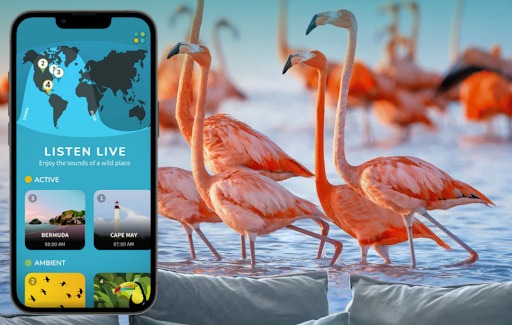Creative tech careers require a combination of creative skills and technological understanding, but also something special: learned thought processes, like divergent and critical thinking.
It’s a myth that you need to be born with artistic talent to be good at design. Good functional (UX) or visual (UI) design is often created by people who can’t draw.
Traditional education doesn’t value creativity much, and likes to tell us that there is only one right answer to every question. But a person with a good imagination can come up with loads of answers when asked “What is a paper clip used for?”
Schools try to erase our imagination & creativity, but these are exactly the skills that are so valuable in creative tech careers.
It is possible to unlearn the constrained approach of traditional education and become more creative by learning new ways of thinking.
Editor’s note: If you’re ready to get your hands dirty in UX design, try our free 5-day short course.
How I got started in design
My parents told me that if I pursued an art degree, I’d end up working at a supermarket till.
How wrong they were. Today, creative careers are amongst the best paid and most enjoyable. I also believe that this trend will continue, a theory well explained in Ken Robinson’s book “The Element: How Finding Your Passion Changes Everything.” (I highly recommend this book and Ken’s YouTube videos if you’re starting your creative career journey.)
I graduated in Product Design 1996. My degree focused on physical products, which sometimes featured small digital screens running simple software.
In 2024 that’s completely reversed: now the majority of the products being designed are software, like apps on phones.
For many people of my generation, I had a very typical design career, from visual design through to web design and then to UX design.
Between graduating and working in visual design, I worked as a C programmer—that’s not so typical. I also found that I really didn’t like coding. However, I was pretty good at information architecture, i.e. designing what the software would do.
My personal experience has been very mixed: I love designing daily, and feel that I found the right career early on, despite an attempted side-track by my parents.
I love the work itself, and I’ve worked at some really fun advertising agencies with amazing offices surrounded by smart creative people.
A day in the life of a designer
I now work with multiple income streams between product design clients, tutoring for CareerFoundry, private online design sessions, and building up educational materials for Artfuly.com.
Here’s an example of how creativity played into my role as a designer for Terra, a nature sounds app.

We were having issues with the live sound feeds breaking, so I created a design to allow pre-recorded sound to be playable if the live stream went offline. This replaced the “Under maintenance” message, which I felt wasn’t a good user experience.
I then designed the updated interface to include the pre-recorded sound. I wrote the annotations: for example, if a user has set a wake up sound, and the live stream becomes unavailable, then the pre-recorded sound would auto-play instead.
Then I briefed the developer and reviewed the work once it’s completed. That’s just one example of product development and problem solving necessary to bring concepts to life.
Besides working for clients as a product designer, I also teach design students online, and write design courses.
How creativity and scientific processes meet
In recent years, a trend has grown: design that emphasizes aesthetics and superficial visual appeal over functionality or real world usability.
I call this the “Dribbbleisation” of design, after the design network Dribbble.
Don’t mistake this for real design.
Real design combines creativity with a rather scientific approach.
Let’s take a deeper look at some of the steps involved in UX design.
A UX designer goes through three main steps to create a new product concept:
- User research, asking the target users what they value
- Prototyping a concept based on that research
- User testing to validate and find issues to fix.
This is an oversimplification, but it’s a scientific thought process more than it is an artistic one.
The real “magic sauce” that sets apart a great creative is the ability to create a concept based on the research, utilizing divergent and critical thinking.
What is divergent thinking?
Divergent thinking involves generating multiple creative solutions or ideas for a problem. It emphasizes exploring various possibilities, perspectives, and unconventional approaches to find innovative solutions.
Unlike convergent thinking, which narrows down options to find the best solution, divergent thinking encourages broad exploration and openness to new and original ideas.
Watch this video about divergent thinking, with the important part starting at 7:40.
Which skills are needed for a creative career in tech?
Successful tech creatives have a combination of technical skills, creativity, and soft skills like:
- Problem solving: Identify challenges and develop creative solutions.
- Technical skills: Proficiency in design software, design principles, and relevant tools and techniques.
- Creativity: A strong sense of innovation to generate unique, functional and visually appealing designs.
- Communication: Effectively convey ideas, collaborate with team members, and understand client requirements.
- Attention to detail: Ensure precision and accuracy in designs.
- Empathy: Understand users’ needs and perspectives to create designs that resonate with them.
- Passion: Stay motivated to continuously improve and innovate.
- Flexibility: Adapt to changes and embrace new technologies, trends, and methodologies.
- Teamwork: Collaborate effectively with colleagues, clients, and stakeholders to achieve common design goals.
- Analytical skills: Evaluate design solutions and make informed decisions
How I’d become a designer if I was starting today
Before taking a UX course, I recommend first learning visual or graphic design.
I say this because UX is complicated and requires many varied and different skills. Having that foundation of visual design definitely helps a UXer to communicate their design concepts.
If you want to become a product designer, the easier path would be Visual Design —> UX Design —> Product Design, because product design requires technological, marketing, and strategic knowledge.
Because I had a product design degree before going into the workforce and learning visual design, I already had the foundational logic to be able to tackle UX design, which I see as quite a scientific pursuit.
The downside of creative careers in tech
The downside of this career can be any time you’re stuck with a toxic manager, colleagues, or clients.
But this can happen in any career you choose. The antidote to this is to focus also on personal growth—things such as knowing when to say no, controlling clients’ pay schedules, calling out toxic situations, and sometimes just having the strength to walk away. That’s where an emergency fund becomes useful!
Creative tech careers to explore
The right path for you is the one that you feel excited about.
Another way to approach this is to think back to when you were a child. I was always drawing and playing with Lego and asking “why” questions.
I was OK academically, but was always way more of a visual communicator. Often, what you’re interested in and what you’re good at are the same things, purely because you spend time getting better at things you’re interested in.
Before you really commit, try watching videos about what a day is like for that job. Reach out to people to ask questions. Attend events!
If you’re a visual person, explore UI Design
As a UI designer, you craft understandable visual interfaces that captivate and engage users.
If you’re visual yet also a bit scientific and like data, explore UX Design
As a UX designer, you shape digital experiences that resonate with audiences.
If you’re quite visual and a jack of all trades, explore UX/UI Design
As a UX/UI designer, you handle the entire experience: designing digital interfaces that not only prioritize user experience, and ensuring seamless interactions and visually appealing designs.
If you’re a mix of sociable and scientific, explore UX Research / UX Testing
As a UX researcher, you conduct in-depth research and testing to refine digital products, ensuring they meet user needs and preferences.
If you’re really organized, explore Product Management
As a product manager, you oversee the entire lifecycle from ideation to launch and beyond.
If you’re logical and good at information architecture, explore Software Engineering / Coding
As a software engineer, you build robust solutions that power the digital landscape.
If you like analyzing things, finding patterns, making arguments or graphs, explore Data Science / Data Analysis
As a data analyst, you unravel insights that fuel informed decision-making and innovation in tech.
If you like persuading people, explore Digital Marketing
As a digital marketer, you explore the intersection of technology and marketing, leveraging data-driven strategies to drive engagement and growth.
Final thoughts
I’d advise that if you want to be successful in a creative tech career, get ready for a considerable and continuous commitment to skilling up.
From the outside, having a career like mine probably looks like I know exactly what to do all the time. In reality, every day is about prioritizing, solving problems, designing experiences and visuals, and researching and measuring impact to the best of my ability, based on my past experience. There’s no set routine and I’m learning constantly.
If you want to have a creative tech career, some important qualities are: resilience, curiosity, and a passion for innovation. Embrace challenges as opportunities for growth, and aim high.
Want to explore more careers in tech? Dive deeper:
